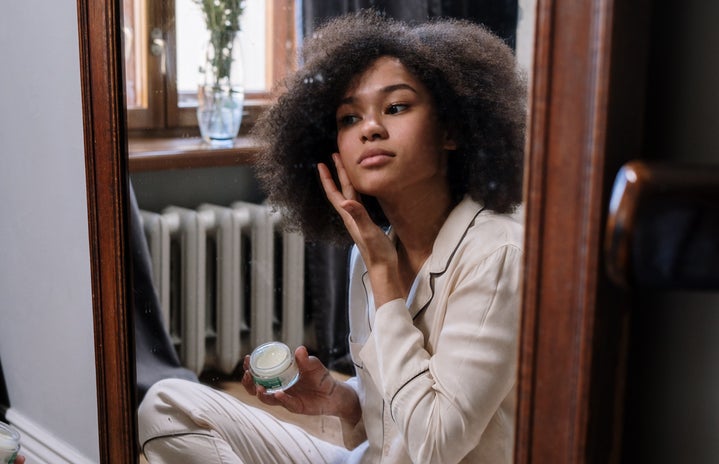Follow along to get into the details, benefits, and sliminess of slugging.
Slugging. No, not the tiny animal or the baseball term. I’m talking about facial slugging, the popular trend that took TikTok by storm a few months ago, and that has been seen continuously since.
So, what is slugging? Slugging is the process of putting on a thick moisturizer or ointment and leaving it overnight. It is known to trap in moisture and leave skin dewy and glowing. However, there are a ton of misconceptions about slugging itself, when and if to use it, and what products to use. Follow along to read some dos and don’ts from an avid facial slugger.
DO: Find a good brand
So many people think good skincare has to be expensive, high-end products to work well. This simply isn’t the case, especially when it comes to slugging. In fact, some of the best and cheapest products are Vaseline and Aquaphor, both of which can be found at basically every drug-store in the country. These provide the slugging moisture you need. However, Aquaphor is known to be better for the skin, combining petroleum jelly with a bunch of other skin-friendly ingredients to act as a better moisture retainer.
DON’T: Slug more than you need to
Because slugging acts as a moisture retainer, it works great for people with dry skin. As someone who used to have really dry skin (and I mean crack and peel dry), slugging has really helped me to retain more moisture in my face. However, it is a waste of time and money to slug every day if your skin isn’t too dry. Instead, try slugging a few times a week, or every other night.
DO: Slug after a good moisturizer
Because slugging retains more moisture in the face, using moisturizer before can really maximize the amount of moisture in your face, which is perfect for people with dry skin. I highly recommend Olay moisturizers, of which there are so many for all different skin-types and occasions.
DON’T: Slug after a retinol or exfoliant
Retinols and exfoliants, no matter how gentle they are marketed to appear, can cause skin irritation. The point of these products is to eliminate dead skin cells, leaving skin looking, and feeling, healthier. However, slugging after a retinol or exfoliant can disturb the process, causing even further irritation. It is better to slug on a night where you don’t use retinols/exfoliants.
DO: Slug other parts of the body
Slugging isn’t just for the face! It’s a great way to hydrate other areas prone to dryness. For example, using it on elbows when the winter comes can help to prevent the dreaded flaky elbow. Also, I put Aquaphor on my lips overnight as well, which has helped to make them look fuller and more hydrated.
DON’T: Slug if you have super-acne prone skin
A tip to keep in mind: Slugging does not work for everyone. It is important to know what your skin type is, as well as to do external research before trying it. Sometimes, slugging while fighting bad acne can be harmful, because while slugging traps moisture, it also can trap sebum, dirt, and other things clogging pores. Again, don’t follow a trend unless you know it’s for you.
It’s no secret that slugging can be great for moisturizing your face and body. But knowing that the slugging process is not the same for everyone (and sometimes NOT for everyone) can help you in making your best skincare decisions. Once you know your skin type and sensitivity, I encourage you to get out there, slugger!


